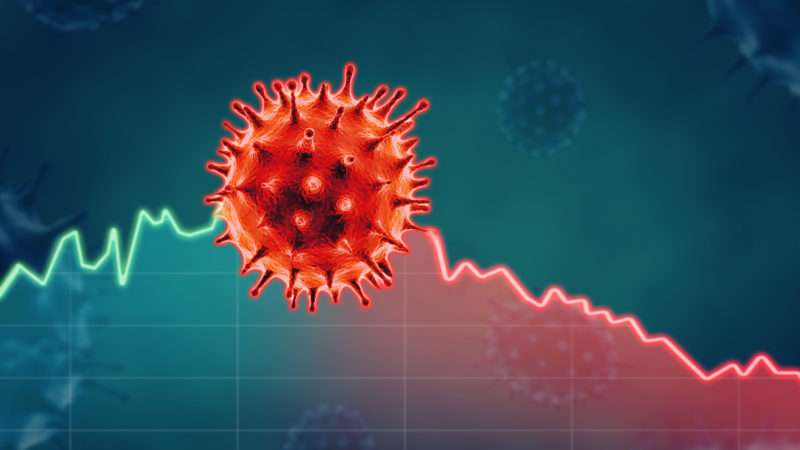
Newly recorded COVID-19 cases and deaths in the United States, which rose dramatically this fall, now seem to be declining. According to Worldometer’s numbers, the seven-day average of daily new cases fell by 18 percent between December 18 and yesterday. The seven-day average of daily deaths has fallen by 19 percent since December 22.
Daily new cases in the U.S. are still five times as high as they were in mid-September, while daily deaths are three times as high as they were in mid-October. But the seven-day average of daily deaths, about 2,200 as of yesterday, has dropped slightly below last spring’s peak after exceeding it for several weeks. The recent trends, assuming they continue, are a hopeful sign that the winter might not be quite as deadly as many people feared.
Back in October, for instance, Joe Biden said “the expectation is we’ll have another 200,000 Americans dead [from COVID-19] between now and the end of the year.” That implied a total U.S. death toll of about 423,000 by January 1. Per Worldometer, the current death toll is about 342,000. With four days to go in the year, it looks like Biden’s projection will be off by 70,000 or so.
Allowing for the lag between laboratory confirmation and death, the recent drop in fatalities corresponds with a decrease in daily new cases recorded in late November. Since newly identified infections are falling again, it is plausible that daily deaths will continue to fall as well.
But for how long? Since COVID-19 symptoms that might prompt someone to seek testing appear two to 14 days after infection, the increase in confirmed cases following the dip in late November is consistent with the fear that gatherings over Thanksgiving weekend would boost virus transmission. The impact of Christmas and New Year’s Day gatherings may not be fully apparent until mid-January or later.
The pessimistic take on the recent dip in daily new cases is that it simply represents a falloff from the surge associated with Thanksgiving, which suggests that cases and deaths will rise again as infections tied to Christmas and New Year’s Day celebrations show up in the official tallies. A more optimistic interpretation is that the dramatic increases in cases and deaths have encouraged wider and more consistent compliance with COVID-19 precautions.
Did the new legal restrictions imposed by many states also play a role? Maybe, although a comparison of the two most populous states seems inconsistent with that hypothesis. California, where Gov. Gavin Newsom has imposed a raft of new restrictions, has seen a smaller decline in daily deaths than Texas, where Gov. Greg Abbott has taken a more lenient approach.
However you interpret current trends, they show that continued increases in new cases and deaths are not inevitable. The way Americans choose to behave in the months until vaccines are widely available will determine exactly how deadly the pandemic proves to be.
from Latest – Reason.com https://ift.tt/3mRgsBf
via IFTTT